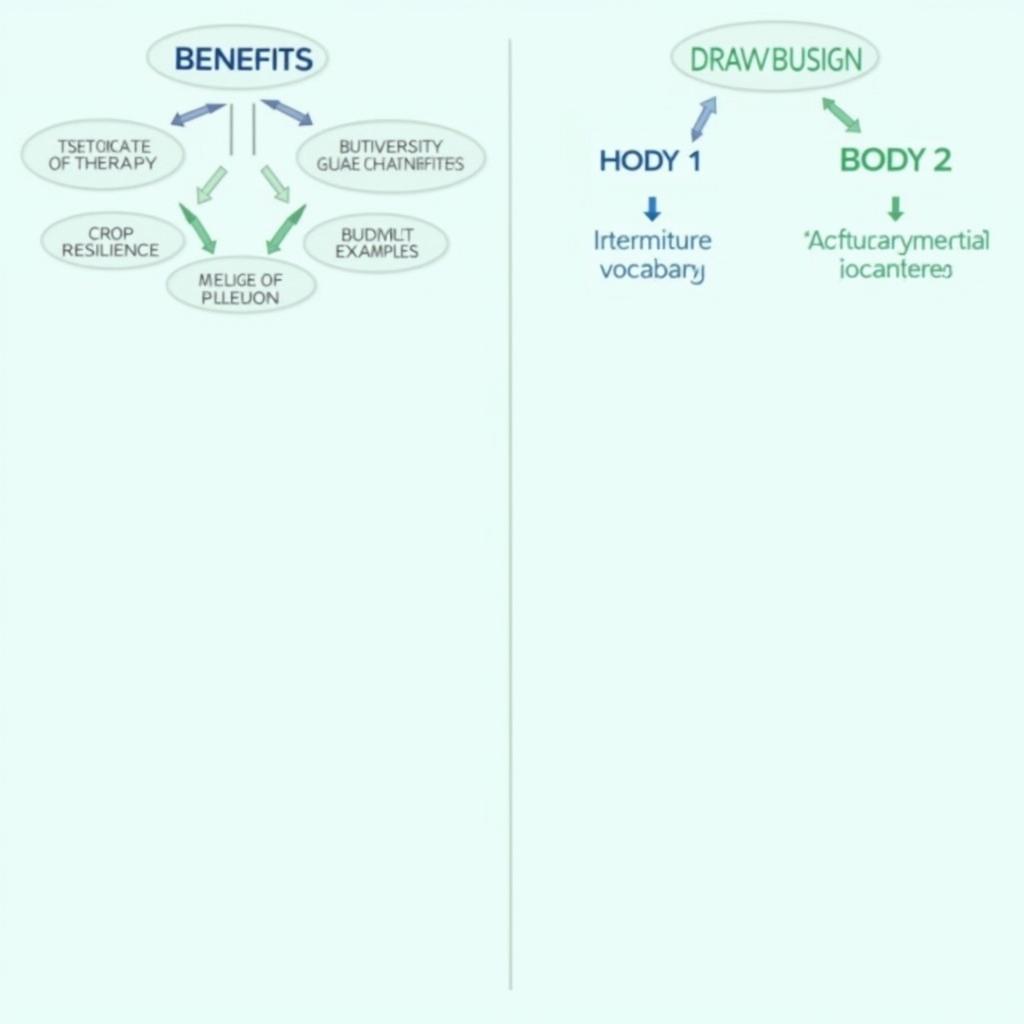Introduction
Genetic engineering regularly appears in IELTS Writing Task 2 because it blends science, ethics, public health, and agriculture—areas that prompt nuanced argumentation and balanced analysis. If you are preparing for topics about technology and society, you are likely to meet questions on “The benefits and drawbacks of genetic engineering,” especially those asking you to discuss both sides or state the extent of your agreement. In this guide, you will learn how to analyze the prompt, avoid common pitfalls, and write band 6, 7, and 8-9 level essays. You’ll also get targeted vocabulary, model sentence structures, and checklists you can apply in timed practice.
Verified past-style prompts include:
- Genetic engineering is a dangerous trend that should be limited. To what extent do you agree or disagree? (Reported in past exam reports on IELTS-Blog.com)
- Some people believe genetically modified foods will solve world hunger; others think they pose risks to human health and the environment. Discuss both views and give your opinion. (Featured as an exam-style practice question on IELTSLiz.com)
- The benefits of genetically modified crops outweigh the disadvantages. Do you agree or disagree? (A widely used sample task in British Council and IDP-style practice materials)
For a clear overview of food-related applications, you may compare this topic with the advantages and disadvantages discussed here: advantages and disadvantages of genetically modified foods.
1. Question & Analysis
Genetic engineering is a dangerous trend and should be limited. To what extent do you agree or disagree?
- Question type: Opinion (agree/disagree). You must present a clear position and support it with reasons, evidence, and examples.
- Requirements:
- State the extent of agreement (fully agree, fully disagree, or partially agree).
- Address both “dangerous trend” and “should be limited.”
- Provide balanced development and specific examples (e.g., medical therapy vs. ecological risks).
- Key terms:
- “Genetic engineering”: deliberate modification of DNA in organisms (humans, animals, crops, microbes).
- “Dangerous trend”: potential harms—health risks, ethical issues, ecological impact, inequality.
- “Limited”: policy controls, regulatory oversight, or partial restrictions.
- Common pitfalls:
- Only discussing GM foods and ignoring medical or environmental applications.
- Making extreme claims without evidence (e.g., “GE always causes cancer”).
- Drifting off-topic into general technology pros/cons.
- No clear opinion or mixed stance without cohesion.
- Strategic approach:
- Brainstorm benefits (e.g., gene therapy, higher yields) and drawbacks (e.g., biodiversity loss, ethical concerns).
- Choose a stance such as “agree with strict regulation, not a total ban.”
- Organize with clear topic sentences and logical progression (benefits → risks → policy-oriented conclusion).
- Use precise topic vocabulary and cautious modality (may, could, tends to).
 IELTS Writing Task 2 genetic engineering analysis with key pitfalls and strategies
IELTS Writing Task 2 genetic engineering analysis with key pitfalls and strategies
2. Band 8-9 Sample Essay
Band 8-9 essays are precise, well-argued, and sophisticated in vocabulary and grammar, yet they remain clear and natural.
Essay (303 words):
In public debate, genetic engineering is often portrayed as a Pandora’s box; however, to claim it is inherently dangerous and must be curtailed across the board is too sweeping. I contend that stringent regulation—rather than blanket limitation—best reconciles the benefits and drawbacks of genetic engineering.
On the benefits side, medical applications are already saving lives. Somatic gene therapies for blood disorders and retinal disease illustrate how targeted interventions can alleviate suffering without affecting future generations. In agriculture, carefully assessed modification can reduce pesticide use and stabilize yields amid climate stress; for instance, pest-resistant cotton has lowered chemical inputs in several regions. Provided robust oversight and post-market monitoring are in place, these gains are tangible and socially meaningful.
Yet the risks cannot be dismissed. Ecologically, unintended off-target effects or gene flow to wild relatives may destabilize ecosystems. Ethically, germline editing raises profound questions about consent and inequality if enhancement becomes a luxury for the wealthy. Furthermore, corporate concentration of patents could undermine farmer autonomy. These are not speculative anxieties; they are plausible hazards that demand a measured response.
The pragmatic path is neither prohibition nor laissez-faire. It is rigorous, transparent regulation anchored in the precautionary principle: authorise somatic therapies with strong evidence; pilot agricultural traits regionally before scaling; prohibit germline editing except for narrow, internationally agreed medical exceptions; and ensure equitable access to prevent widening social gaps. Only under such conditions do the clear benefits justifiably outweigh the legitimate risks.
In short, genetic engineering is a powerful tool whose safety depends on how we govern it. With vigilant institutions and public scrutiny, society can harness its medical and agricultural promise while placing firm guardrails around its most perilous edges.
Scoring (estimated):
- Task Response: 8.5
- Coherence & Cohesion: 8.5
- Lexical Resource: 8.5
- Grammatical Range & Accuracy: 8.5
Why this essay excels:
- Clear stance: advocates regulation, not a blanket limit.
- Balanced development of benefits and risks with specific domains (medical, agriculture).
- Advanced vocabulary used precisely: “somatic,” “off-target effects,” “precautionary principle.”
- Cohesive progression with logical sequencing and clear paragraphing.
- Controlled hedging and modality to avoid overclaiming.
- Varied complex structures and nominalization used naturally.
- Policy recommendations demonstrate depth and specificity.
For those exploring how this technology affects yields and supply chains, see a focused discussion in: the impact of genetic engineering on food production.
3. Band 6.5-7 Sample Essay
Band 6.5-7 essays present a clear opinion and relevant ideas, but may show occasional imprecision, limited range, or minor lapses in cohesion.
Essay (268 words):
Many people argue that genetic engineering is dangerous and must be limited. I partly agree: some areas need strict control, but an outright limitation would also block legitimate benefits. In other words, we should manage the risks rather than shut the door on the science.
On the positive side, gene-based medicine can treat serious illnesses. For example, therapies that correct defective genes in blood cells offer hope to patients who have no other options. In agriculture, genetically modified crops can resist pests and tolerate drought, which can help stabilize food supplies when the climate is unpredictable. If we monitor safety and perform long-term studies, these advantages can be realized responsibly.
However, there are clear drawbacks. Modified genes may spread to wild species and affect biodiversity. There are moral concerns too: germline editing could allow the wealthy to “design” advantages that others cannot afford. Also, if large companies control the seeds and patents, farmers may become dependent and lose bargaining power. These risks are not imaginary, so governments should regulate carefully.
Overall, I believe the best approach is robust oversight: approve medical treatments with strong evidence, test agricultural traits in stages, and restrict germline editing to very limited medical cases. By doing so, we keep the door open to innovation while reducing the potential harms. Therefore, the statement that genetic engineering is a dangerous trend is partly true, but a smarter solution is strong regulation rather than broad limitation.
Scoring (estimated):
- Task Response: 7.0
- Coherence & Cohesion: 7.0
- Lexical Resource: 7.0
- Grammatical Range & Accuracy: 6.5
Direct comparison with Band 8-9:
- Specificity: Band 8-9 cites mechanisms (off-target effects, precautionary principle); Band 7 remains more general.
- Vocabulary: Band 8-9 uses precise terms (“germline,” “equitable access”); Band 7 uses broader, safer wording.
- Cohesion: Band 8-9 has sharper signposting and argument layering; Band 7 is clear but less nuanced.
- Grammar: Band 8-9 shows wider variety (inversion, non-defining clauses); Band 7 relies on standard complex sentences.
A related ethical angle worth exploring is how far we should go with animals; for background reading, see: The ethical implications of creating genetically modified animals.
4. Band 5-6 Sample Essay
Band 5-6 essays are understandable and address the task, but they show issues with clarity, development, grammar, and lexical accuracy.
Essay (259 words):
Some people say genetic engineering is dangerous and has to be limited. I think it is partly true, but also we should not stop it because there are many benefits. Firstly, gene therapy are improving life for patients who cannot be helped by normal medicine. Also, GM crops give more foods and can grow even when weather is very hot, which is important for many Asian countries.
However, there are problems which we cannot ignore. If companys own the seeds, farmers will paying more money and it is unfair. Another risk is that modified genes can move to wild plants and make environment bad. We do not know the long term effects, so it is better to be careful.
In my opinion, government should limit gene editing in human except for serious diseases, and they must test crops enough before selling to market. If we do this, we can use the good sides and reduce the bad sides. Therefore, I do not agree to ban genetic engineering totally, but we need strong rules so it will not be dangerous for people and nature.
Scoring (estimated):
- Task Response: 6.0
- Coherence & Cohesion: 5.5
- Lexical Resource: 5.5
- Grammatical Range & Accuracy: 5.5
Error analysis and corrections:
| Mistake (excerpt) | Why it’s wrong | Correction |
|—|—|—|
| gene therapy are improving | Subject–verb agreement error | gene therapy is improving |
| GM crops give more foods | Uncountable noun; unnatural collocation | GM crops increase food production |
| companys | Spelling/plural | companies |
| farmers will paying | Tense/form | farmers will pay |
| make environment bad | Vague, informal | harm the environment |
| human (uncountable) | Countable/plural form | humans |
| selling to market | Missing article and collocation | selling to the market |
How to move from Band 6 to Band 7:
- Replace vague phrases with precise terms (e.g., “harm biodiversity” instead of “make environment bad”).
- Improve grammatical accuracy (subject–verb agreement; articles; plural nouns).
- Add specific, relevant examples (named therapies, clear policy steps).
- Strengthen cohesion with clear topic sentences and logical linking.
- Use academic collocations (regulatory oversight, long-term monitoring).
As you broaden your examples, you might also consider economic context; similar debates arise in the impact of international trade on agriculture, especially around farmer autonomy and market access.
5. Essential Vocabulary: The Benefits and Drawbacks of Genetic Engineering
| Word/Phrase | Type | Pronunciation | Definition | Example | Collocations |
|---|---|---|---|---|---|
| somatic gene therapy | noun phrase | /səˈmætɪk dʒiːn ˈθerəpi/ | Gene editing affecting body cells, not inherited | Somatic gene therapy can treat blood disorders. | somatic mutation; somatic treatment |
| germline editing | noun phrase | /ˈdʒɜːmlaɪn ˈedɪtɪŋ/ | Editing reproductive cells; heritable | Germline editing raises ethical concerns. | ban/prohibit germline editing |
| off-target effects | noun phrase | /ˌɒf ˈtɑːɡɪt ɪˈfekts/ | Unintended genetic changes | Regulators test for off-target effects. | detect/mitigate off-target effects |
| gene flow | noun phrase | /dʒiːn fləʊ/ | Transfer of genes between populations | Gene flow from crops to wild plants is risky. | prevent/monitor gene flow |
| biodiversity | noun | /ˌbaɪəʊdaɪˈvɜːsɪti/ | Variety of life in an ecosystem | Monoculture can reduce biodiversity. | protect/erode biodiversity |
| monoculture | noun | /ˈmɒnəkʌltʃə/ | Cultivation of a single crop | Monoculture increases vulnerability. | monoculture farming/practices |
| regulatory oversight | noun phrase | /ˈreɡjʊlət(ə)ri ˈəʊvəsaɪt/ | Supervision by authorities | Strong regulatory oversight is essential. | ensure/strengthen oversight |
| precautionary principle | noun phrase | /prɪˈkɔːʃən(ə)ri ˈprɪnsəpl/ | Act to prevent harm despite uncertainty | Adopt the precautionary principle in policy. | apply/enshrine the principle |
| equitable access | noun phrase | /ˈekwɪtəb(ə)l ˈækses/ | Fair availability for all | Equitable access to therapies is vital. | ensure/promote equitable access |
| corporate concentration | noun phrase | /ˈkɔːp(ə)rət ˌkɒnsənˈtreɪʃn/ | Market power held by few firms | Corporate concentration can harm farmers. | rising/high concentration |
| cost–benefit analysis | noun phrase | /ˌkɒst ˈbenɪfɪt əˈnæləsɪs/ | Comparing pros and cons quantitatively | A cost–benefit analysis can guide policy. | conduct/perform analysis |
| Notwithstanding | transition | /ˌnɒtwɪθˈstændɪŋ/ | In spite of | Notwithstanding the risks, benefits exist. | Notwithstanding X, … |
| By the same token | transition | /baɪ ðə seɪm ˈtəʊkən/ | For a similar reason | By the same token, regulation is needed. | By the same token, … |
| boon | noun | /buːn/ | A benefit or advantage | Drought tolerance is a boon to farmers. | a boon for/to |
| drawback | noun | /ˈdrɔːbæk/ | Disadvantage | A key drawback is ecological risk. | major/serious drawback |
6. High-Scoring Sentence Structures for “The Benefits and Drawbacks of Genetic Engineering”
- Complex subordination
- Formula: Although/While + subordinate clause, main clause.
- Band 8-9 example: Although the risks cannot be dismissed, rigorous oversight allows society to capture clear medical and agricultural gains.
- Why it scores well: Balances contrast concisely, showing control of complex clauses.
- Additional examples:
- While gene flow is a concern, containment strategies can reduce it.
- Although corporate patents may concentrate power, antitrust policy offers remedies.
- Common mistake: Misplacing commas or using fragments.
- Non-defining relative clauses
- Formula: Main clause, which + extra information, main clause.
- Example: These gains are tangible and socially meaningful, which justifies cautious expansion under regulation.
- Why: Adds precision without breaking flow.
- Additional examples:
- Germline editing, which affects future generations, remains controversial.
- Golden Rice, which aims to alleviate vitamin A deficiency, still faces debate.
- Mistake: Omitting commas or using “that” instead of “which.”
- Participle phrases
- Formula: -ing/-ed phrase, main clause.
- Example: Provided robust oversight and post-market monitoring are in place, benefits are likely to outweigh risks.
- Why: Concise condition-setting; advanced variety.
- Additional examples:
- Considering long-term data, regulators can decide more fairly.
- Framed by equity concerns, policy must avoid exclusion.
- Mistake: Dangling modifiers not clearly linked to the subject.
- Cleft sentences
- Formula: It is/was + focus + that/who + clause.
- Example: It is rigorous, transparent regulation that best reconciles the two sides of this debate.
- Why: Emphasizes key message.
- Additional examples:
- It is germline editing that triggers the deepest ethical worries.
- It is equitable access that determines social legitimacy.
- Mistake: Overuse leading to unnatural tone.
- Advanced conditionals
- Formula: Were + subject + to + verb, main clause would…
- Example: Were germline editing widely permitted, inequality could deepen irreversibly.
- Why: Shows control of inversion and hypothetical reasoning.
- Additional examples:
- Had regulators ignored off-target effects, public trust would have collapsed.
- Should trials reveal harm, approval must be withdrawn.
- Mistake: Mixing conditional forms inconsistently.
- Inversion for emphasis
- Formula: Not only + auxiliary + subject + verb, but also + clause.
- Example: Not only can gene therapies alleviate suffering, but they can also reduce lifetime healthcare costs.
- Why: Emphatic, cohesive; advanced grammar.
- Additional examples:
- Rarely has a technology promised such medical potential.
- Hardly ever do policies achieve zero risk.
- Mistake: Forgetting auxiliary inversion after the adverbial.
 Band 9 grammar patterns applied to genetic engineering IELTS essays
Band 9 grammar patterns applied to genetic engineering IELTS essays
7. Self-Assessment Checklist
Before writing:
- Identify the exact question type (opinion, discussion, advantages/disadvantages).
- Brainstorm both sides: medical, agricultural, ecological, ethical, economic.
- Decide your stance and two main reasons.
- Note 4-6 topic-specific words to use accurately.
While writing:
- Use a clear thesis in the introduction.
- Start each paragraph with a topic sentence.
- Support with specific, relevant examples (policies, mechanisms, typical scenarios).
- Include cautious modality (may, can, tends to) for scientific claims.
After writing:
- Check that every paragraph directly answers the question.
- Replace vague words with precise terms (biodiversity, oversight).
- Fix grammar hotspots: articles, S–V agreement, plural nouns.
- Ensure 250+ words; remove repetition.
Time management tips:
- 2–3 minutes: analyze the question and plan.
- 25–28 minutes: write steadily with paragraph goals.
- 4–5 minutes: revise vocabulary and grammar, refine the conclusion.
 IELTS Task 2 checklist for genetic engineering essays with timing breakdown
IELTS Task 2 checklist for genetic engineering essays with timing breakdown
Conclusion
Mastering IELTS Writing Task 2 on “The benefits and drawbacks of genetic engineering” requires a clear stance, balanced development, and precise language. Focus on real-world mechanisms (gene therapy, gene flow, oversight) and policy-level solutions (phased trials, germline limits, equitable access). If food applications interest you, a helpful related topic is explored here: the impact of genetic engineering on food production. With consistent practice, most learners can move up 0.5–1 band over 6–10 weeks by targeting vocabulary, cohesion, and accuracy.
Your next step: write your own response to the selected prompt and compare it with the Band 7 model, then refine toward the Band 8-9 features. Share your revised essay and specific questions so we can troubleshoot together. For those curious about the medical side of ethics beyond crops, you may also consult this related debate: the ethical implications of genetic testing. Keep practicing under time pressure, review your errors, and steadily add precise topic vocabulary.


